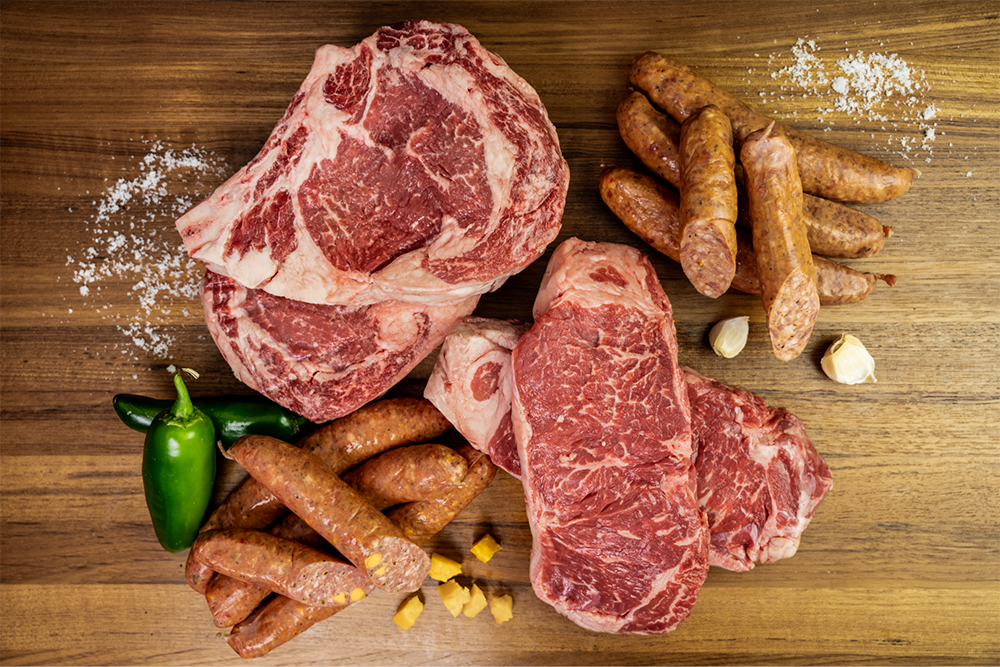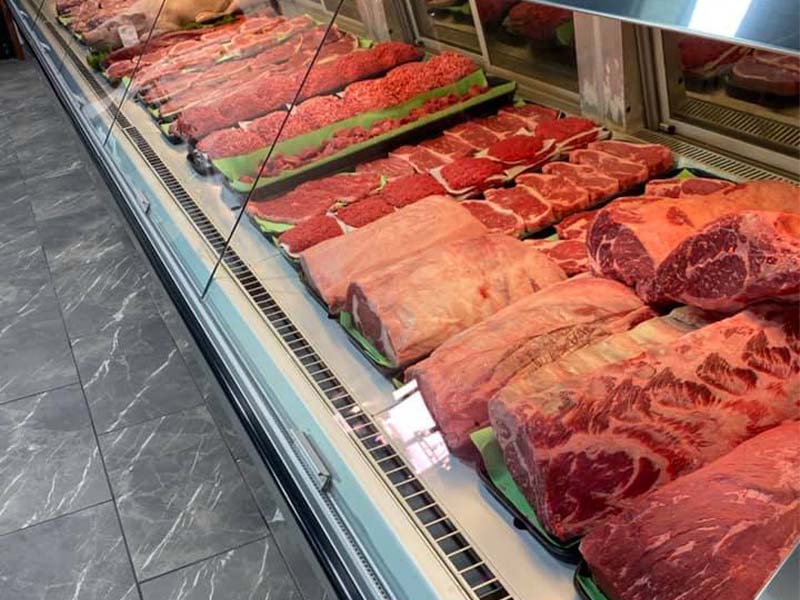Why Bagley Farms Meat Market Edwardsville IL Is the Best Choice for Top Quality Meats
Why Bagley Farms Meat Market Edwardsville IL Is the Best Choice for Top Quality Meats
Blog Article
Reveal the Art of the Butcher's Cut in a Modern Meat Market
In the ever-evolving landscape of contemporary meat markets, the butcher's cut has transcended its standard roots, combining olden workmanship with contemporary techniques. What truly sets the contemporary butcher apart is their capacity to create a much deeper link in between consumers and the beginnings of their meat.
Advancement of Butchery Strategies

The mid-20th century saw butchery techniques even more refined by scientific insights into muscle biology and meat aging, boosting both inflammation and preference. Innovations like vacuum packaging and refrigeration expanded item shelf-life, allowing butchers to diversify offerings and improve high quality control. This period additionally marked the rise of customized tools, such as band saws and meat slicers, which enhanced accuracy and efficiency in meat handling.
Digital systems now assist in monitoring pet provenance and optimizing cuts to fulfill particular consumer preferences. Furthermore, a resurgence in artisanal butchery has arised, blending standard abilities with modern understanding to provide to consumers looking for moral and sustainable meat choices.

Recognizing Meat Cuts

Recognizing the ins and outs of meat cuts is important for both butchers and customers looking for quality and worth. For butchers, exact cuts reflect ability and respect for the craft, ensuring marginal waste and ideal return.
The main categories of meat cuts consist of primal, sub-primal, and retail cuts. Primitive cuts, such as the loin, rib, and chuck, are the large areas initially divided from the carcass. Butchers then damage these down even more right into sub-primal cuts, before ultimately creating retail cuts available to customers, like ribeye or tenderloin. Each stage needs cautious attention to anatomical framework and muscle make-up.
Recognizing muscle mass structure is crucial; muscles used much more often by the pet have a tendency to be harder and are best matched for sluggish cooking techniques, while less-used muscle mass, like those found in the loin, are much more tender and suitable for grilling or roasting. Familiarity with these differences equips customers to make educated options, boosting their cooking ventures.
Selecting High Quality Meat
Selecting the appropriate meat involves greater than just go to this site picking a visually appealing piece from the display. The art of selecting top quality meat calls for a critical eye and expertise of details features that indicate quality and quality. Pay interest to the color; beef should have an intense, cherry-red tone, while lamb must display a soft pink tone, and pork a pale pink. This shows the meat is fresh and hasn't been subjected to oxygen for as well long.
Second of all, think about the marbling, which refers to the white streaks of fat within the muscle mass. Proper marbling is a crucial indicator of inflammation and flavor, as it thaws during food preparation, improving the meat's juiciness. Remember, greater marbling typically associates with superior top quality cuts, such as USDA Prime.
Structure is another important element; meat needs to feel strong to the touch, not slimy or excessively soft. Additionally, be conscious of the scent. Fresh meat must have a clean, neutral odor, free from any type of sour or off-putting odors.
Coupling Cuts With Cooking Techniques
Successfully matching cuts of meat with the suitable food preparation approaches is crucial for accomplishing optimum flavor and texture. Various cuts vary in tenderness, marbling, and connective tissue web content, each calling for certain methods to unlock their potential. For example, tender cuts like filet mignon and ribeye, with their fundamental marbling, take advantage of high-heat, quick-cooking approaches such as grilling or pan-searing. These methods improve the meat's all-natural tastes and make certain a juicy finish.
On the other hand, content tougher cuts like brisket and chuck roast are rich in collagen, which breaks down into gelatin when cooked slowly. These cuts are click to read optimal for braising or sluggish roasting, enabling the meat to tenderize gradually and establish deep, complicated flavors. Likewise, cuts such as brief ribs and pork shoulder prosper with slow-cooking methods, where extended cooking times change their durable structures into succulent dishes.
Lamb shanks and oxtail, which require prolonged food preparation to soften, are ideal candidates for cooking or slow-moving simmering. These techniques coax out rich, hearty tastes while preserving moisture. By understanding the unique features of each cut, cooks and home cooks alike can elevate their cooking developments, making sure each dish is both pleasing and remarkable.
The Butcher's Function Today
Browsing the developing landscape of the modern meat market, the butcher's function today extends past mere preparation of cuts. Contemporary butchers are cooking artisans, instructors, and advocates for lasting practices.
Along with crafting precise cuts, butchers currently engage straight with customers, using cooking suggestions and tailoring options to fit specific needs and choices. Their competence in meat aging, marbling, and flavor accounts equips customers to make educated choices, boosting their culinary experiences. This individualized solution exemplifies the butcher's developing duty as a trusted consultant in the kitchen area.
Moreover, butchers are critical in lessening waste, making use of entire animals to create diverse items such as sausages and supplies - bagley farms meat market edwardsville il. This thorough approach not only appreciates the pet however additionally straightens with modern sustainability goals. This way, the contemporary butcher symbolizes both practice and innovation, adapting to an ever-changing market while preserving the artistry and integrity of their craft

Conclusion
Mastery in recognizing diverse meat cuts and high quality indications equips butchers to give informed referrals, aligning certain cuts with optimum cooking techniques. By recognizing historical methods while welcoming contemporary demands, the butcher's duty remains important in today's innovative meat market.
Report this page